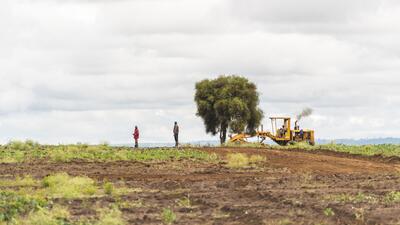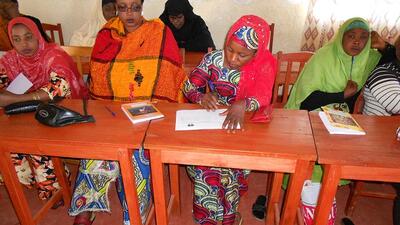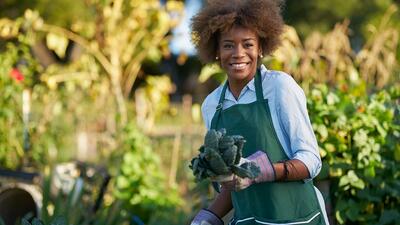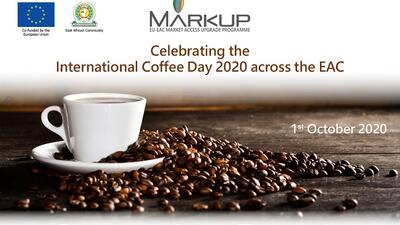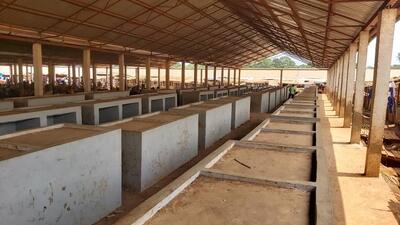
Comprar en África para África: El ITC apoya los esfuerzos de las Naciones Unidas por adquirir productos locales (en)
A meeting that took place six years ago changed the course of business for the South Africa-based clean-water company Aqua Salveo, transforming it from a smaller-scale business to a global supplier of goods.
As part of a buyer-seller meeting organized in Johannesburg in November 2008 under the International Trade Centre’s (ITC) Buying from Africa for Africa initiative, the company presented its business case to 29 aid agencies and 71 companies during one-on-one meetings, showcasing products such as its water disinfectant, anti-bacterial gloves and surface sanitizer.
As a result, Aqua Salveo secured orders including one from UNICEF, which exceeded 250,000 South African Rand, or approximately US$ 23,500. That in turn led to the company becoming registered as a United Nations Development Programme (UNDP) Level 1 vendor for orders up to US$ 500,000.
‘It inspired us to invest in and obtain international accreditation for Aqua Salveo products,’ said Chief Executive Officer (CEO) Annalise Grobler. ‘It assisted Aqua Salveo in realizing our dream, which was to become a global supplier in worldwide water wellness. We are growing from strength to strength.’
Aqua Salveo was one of 350 companies that benefitted from the Buying from Africa for Africa initiative, which set out to increase the share of African vendors in aid procurement. Companies concluded US$ 52 million worth of business as a result of the programme.
In 2001, when the initiative started, African companies supplied less than 10% of the United Nations’ humanitarian aid spent on the continent. The percentage now stands at 16%, thanks to increased export capacities of the African private sector, accessibility of information and stronger efforts by aid agencies to source locally.
‘Buying from Africa for Africa was based on an innovative idea,’ said Sylvie Bétemps, who managed the programme at ITC. ‘At first, it was not easy to convince aid agencies and companies to source goods from the region. But when they realized the high untapped potential and ITC’s rigorous methodology to identify, audit and coach exporters and match them with procurement officers from the United Nations and NGOs, they decided to invest time and money to attend regional buyer-seller meetings.’
Buying locally not only reduces costs, but also facilitates rapid response in case of disasters, she added.
Aqua Salveo has since received international accreditations and expanded into the rest of Africa, South America and Europe, taking on longer-term and larger-volume contracts, while realizing new applications for its products, such as those related to the military and maritime industries. It has increased its workforce from 70 global agents selling Aqua Salveo products in 2008 to 1,401 agents today.
The International Committee of the Red Cross (ICRC) was involved in the Buying from Africa for Africa initiative from the beginning. Marie-Jésus Otaegui, Senior Purchaser at the ICRC, who has worked out of the organization’s regional logistics centre in Nairobi, says that the initiative helped to expand the supplier database for local procurement.
‘As a buyer, you don’t always have the time, if you are sitting in Nairobi, to go and visit companies in Uganda, Tanzania, Rwanda, Burundi or southern Africa,’ Otaegui said. In 2013, more than half (53%) of the value of goods and services procured by the ICRC was done locally and regionally in Africa, particularly from Kenya and Mali, she said.
In the early 2000s, at around the time the Buying from Africa for Africa initiative was launched, UNICEF began making a ‘conscious effort’ to buy supplies directly from the countries where goods are available to reduce the delivery time from suppliers to programmes, according to Joselito Nguid, Deputy Director of the organization’s Supply Division.
‘The ITC initiative in the early stages of our procurement life has been a catalyst for the African market,’ Nguid said. ‘We have basically taken advantage of those initiatives and put it forward to a wider stretch of business. The initial push from ITC allowed us to move forward and expand our supplier base on our own.’
He added: ‘ITC’s initiative contributed to the long-term approach to buyer-seller meetings, especially in developing countries.’ It also contributed to an increase in the sourcing of goods from Africa. For example, UNICEF now buys large amounts of long-lasting bed nets from a company in Tanzania and has expanded its procurement of therapeutic nutritional foods in Africa.
In 2004, UNICEF spent US$ 600-700 million on procurement worldwide. In 2013, UNICEF’s global spending reached US$ 2.8 billion.
As for the clean-water company Aqua Salveo, CEO Annalise Grobler says a benefit of the Buying from Africa for Africa initiative is that it exposed her company to international aid organizations’ policies, procedures and expectations, assisting it in scaling up its business.
‘The ongoing support and guidance we have received enabled us to become more confident in our international dealings,’ she said. ‘I believe that this is an invaluable initiative that every small and medium-sized enterprise who wishes to be a global player should be a part of.’




